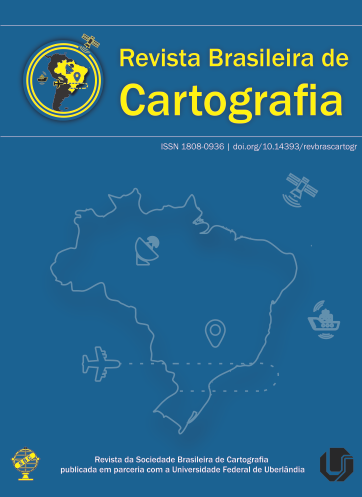Métodos de Planejamento de Rotas para RPAs: uma Revisão da Literatura
Conteúdo do artigo principal
Resumo
Nos dias atuais, as aeronaves remotamente pilotadas (RPAs), popularmente conhecidas como drones, atuam em aplicações de diversas áreas, aumentando em número de aeronaves e compartilhando do espaço aéreo. Nesse cenário, a segurança é fator crucial e, portanto, planejar rotas confiáveis se torna essencial. Múltiplos são os algoritmos baseados em inteligência computacional, bem como as funções heurísticas, adotados para a roteirização de RPAs. No entanto, para bem aplicá-los, dependendo da finalidade do voo, é fundamental conhecer os diversos métodos de planejamento de rotas para RPAs. Diante disso, o presente estudo tem por objetivo apresentar, por meio de uma revisão de literatura, os diferentes métodos de roteirização de RPAs, enfatizando suas principais características e apresentando estudos que os envolvam. Trinta e nove artigos publicados entre 2002 e 2020, disponíveis em diferentes bases de dados, foram estudados, os quais possibilitaram classificar os métodos de planejamento em três grupos: baseados no domínio do tempo (online ou offline), em função do modelo de ambiente (2D ou 3D) e com relação às características da aeronave (asa fixa, rotativa, oscilante ou modelo híbrido). Ademais, destacam-se estudos envolvendo algoritmos e funções heurísticas aplicados a cada método de roteirização identificado. Com base nas referências revisadas, evidencia-se que as pesquisas tendem para a roteirização tridimensional e online, uma vez que abordam condições e ambientes mais realistas de voo, cujas características principais são enfatizadas ao final desse estudo.
Downloads
Detalhes do artigo
Seção

Esta obra está licenciado com uma Licença Creative Commons Attribution 3.0 Unported License.
Autores que publicam nesta revista concordam com os seguintes termos:
- Autores mantém os direitos autorais e concedem à revista o direito de primeira publicação, com o trabalho simultaneamente licenciado sob a Licença Creative Commons Atribuição que permite o compartilhamento do trabalho com reconhecimento da autoria e publicação inicial nesta revista.
- Autores têm autorização para assumir contratos adicionais separadamente, para distribuição não-exclusiva da versão do trabalho publicada nesta revista (ex.: publicar em repositório institucional ou como capítulo de livro), com reconhecimento de autoria e publicação inicial nesta revista.
- Autores têm permissão e são estimulados a publicar e distribuir seu trabalho online (ex.: em repositórios institucionais ou na sua página pessoal) a qualquer ponto antes ou durante o processo editorial, já que isso pode gerar alterações produtivas, bem como aumentar o impacto e a citação do trabalho publicado (veja "O Efeito do Acesso Aberto").





